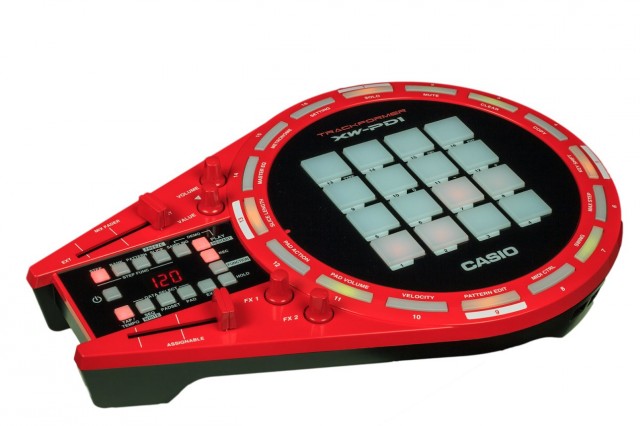Okay, so Casio have crammed a groove box into a Millennium Falcon, and that was a little strange (and means squeezing some of the controls, since the shape is irregular). But now that the shock has worn off, the next question: should we get one for review when it arrives later this March? Should you keep it on your 2015 gear radar?
The answer turns out to be yes, as a few readers have told me online and offline. And the reason has to do with a keyboard you probably ignored from Casio a couple years back. Let us explain.
You’d be forgiven if you missed the XW-G1. Apart from having a name that you might forget in the middle of trying to say it out loud — (“ah, the X-G… X… what?”) — you wouldn’t know by looking at it that it was anything other than another brightly-colored keyboard workstation-ROMpler-something-or-other out of Japan. For added confusion, there was both an XW-G1 (the “G” is for groove), and XW-P1 (for “performance” with “Hybrid Processing Sound Source” and “HexLayer” – that makes everything much clearer).
Okay, so there are two XW synths. But what’s really important is that both have a ridiculously cool step sequencer built into it.
As noted in comments, you can record knob movements. You can import (very, very small) drum samples. On top of that, you can output the arpeggiator and sequencer via MIDI – nine whole tracks of it.
“Ah,” you say, “but I don’t want to buy some giant keyboard just to get a cool step sequencer, no matter how cheap it might be on Craigslist. Why don’t they just break off the sequencer bit?”
Ah-hah.
Now you’re getting it. That’s nearly exactly what they did. Now, it would have been nice if they broke it off into a rectangle, but… well, they went Han Solo on us. Still, it’s the sequencer that counts. Via Gearslutz, a Casio rep tells the world (thank you, CDM reader Will, in comments – for this and your XW-G1 feedback):
The Step Sequencer itself on the XW-PD1 is 64 tracks. Basically you get a track for each pad and there are 4 selectable banks of 16 pads. The drum sounds are all new and different from the XW-G1 plus it has the ability to load in samples (similar to the XW-G1). The effects are also different from the XW-G1. You can assign effects (Stutter, Delays, Ring Mod, Filters and more) to Pads. The Pads can latch so the effect stays on until you hit it again or they can just function momentary. While an effect is engaged you can use the knobs to manipulate those
effects in real-time. The XW-PD1 also processes incoming audio through those effects.
Okay, then. Hang on a second. This is all sounding awesome. You’re telling us we have a 64-track step sequencer for under US$400 list price and it has drums and effects on it, too, plus various performance features?
Hell, Casio, I don’t care if you stick that into Barbie’s pink SUV. Yes, we’re interested. And yes, we’ll still need to review it to make sure you can’t accidentally hit that power button.
But with Korg’s ElecTribes shipping, Roland’s TB-3, and now this, plus – um, anything that might happen at NAMM – the standalone groovebox/sequencer category is suddenly interesting again.
And yes, that includes the XW… um… the XW … PD1. That’s it.
You know, the red thing. That one. We’re making fun of it, but … yes, we might actually also want one.
With one major, major caveat: As several readers note, the product specs (not yet available when I wrote this and the preview) clearly say USB only – no MIDI DIN. So you can only use this standalone if you have something that acts as a USB host. That’s a pretty big drawback: you can’t just plug this into most gear. You could use internal sounds, but sample size is limited. It’s a shame a US$400 box is absent MIDI connectivity.
